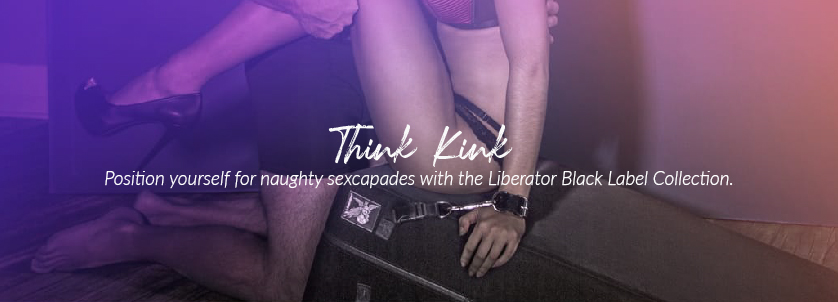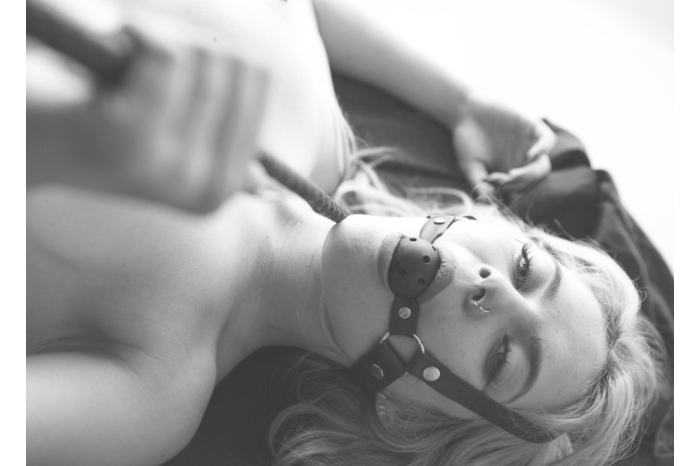Safety and communication are key elements of BDSM. These concepts are a vital part of sex, whether the sex be kinky, vanilla, or somewhere in between. However, this can get a bit trickier when engaging in bondage or S&M. For instance, the phrase “that hurts!” is generally a tell-tale sign you should stop what you’re doing mid-coitus, but if what you’re doing is spanking, then that guideline might not apply.
So when “no” doesn’t necessarily mean “no,” how do you stop or slow down a scene? New and alternative phrases and signals can take the place of your standard “yes/no/maybe” so you can stay within the realm of a scene without sacrificing safety.
Verbal Safety Signals
Safewords
Simple and straightforward, a safeword is an agreed-upon word that either party can utter mid-scene that signals to the other that it’s time to stop playing ASAP. When picking your safeword, it’s important to choose one that you wouldn’t normally say during sex so that there’s no confusion. Words like “banana,” “New York,” and “flag” are good examples—unless, of course, you’re fucking someone with a banana. Or are partaking in an Uncle Sam roleplay sesh. Or if… y’know what? I think you catch my drift. The point I’m making here is that phrases said while fucking can vary greatly depending on the individuals involved in the fuck. You know what kind of stuff you and your partner are prone to say in the bedroom, so stay away from those when choosing a safeword, and you should be good to go.
Stoplight System
A personal favorite of mine, the stoplight system is a version of safewords that’s even more communicative. Essentially, the safewords here are color-coded just like a stoplight is: “Red” means you should stop a scene entirely, “Yellow” means that things are becoming too much or that someone isn’t enjoying a particular act, and “Green” being the go-ahead to keep playing as is.
The stoplight system is particularly handy in situations where a scene is getting close to crossing someone’s boundaries but isn’t quite there yet. “Yellow” allows partners to communicate discomfort or a warning so that the intensity of a scene can lessen without having to halt the scene altogether. As an admittedly stubborn submissive myself, “Yellow” is a godsend—I can keep playing without having to suffer through something I’m not into just to keep things going. And if I can do it, so can you!
Physical Safety Signals
Whether it be due to disability or a specific sexual activity, speech isn’t always an option for in-scene communication. In these instances, you'll need a set of physical signals you can use to communicate with your scene partner.
Eye Signals
Ballgag got your tongue? Blinking eyelid movement can be a great stand-in for speech when it comes to conveying your needs and desires. Below are a few options you can use, but there’s no reason you can’t create your own if something else might work better for you!
Potential eye signals and their paired meanings:
- “We need to stop the scene fully.” —- Alternate winking from one eye to the other.
- “I dislike what you’re doing or find it too intense but still want to keep playing another way.” —- Rapidly blink both eyes repeatedly.
- “Yes.” —- Rapidly blink with your right eye only.
- “No.” —- Rapidly blink with your left eye only.
Regardless of what eye signals you choose to employ in your kinky fun, you’ll want to repeat the motion (when applicable) until it’s clear your sign has been understood.
Hand Signals
Blindfolds can be thrilling, but being blind to safewords (or safety signals) is unacceptable! If your eyes and mouth are simultaneously occupied, then makeshift sign language can come in handy during your BDSM scene.
Just as the same applies to the above eye signals, the following hand signals are only examples and suggestions. Feel free to make up your own if they’ll be a better fit for you and your partner(s)!
Potential hand signals and their paired meanings:
- “I need to stop playing and end the scene now.” —- Open and close your left fist repeatedly.
- “I don’t like what you’re doing," or "This is too intense. Please stop/ease up, and we can move on to something else.” —- Open and close both fists repeatedly.
- “Yes, that’s okay” or “I’m doing well and enjoying myself!” —- Make a peace sign.
It’s crucial to consider the ease, visibility, and situational application of hand signals before officially marking them as your physical safewords. You must be able to perform a motion in various states of bondage and positions for them to work. For this reason, you should probably steer clear of any movements that require your hands to interact with each other. After all, I’d imagine it’s pretty hard to clap your hands when your wrists are tied to opposite bedposts.
As any seasoned BDSM practitioner already knows, kink can be complicated. Plan ahead for all the possibilities to ensure your safewords and safety signals will work regardless of the salacious situation at hand.
Play rough (if that’s your thang) and play safely, kinksters!










